Olive Czech Nymph
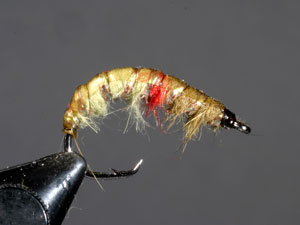
Hook: Mustad Ultrapoint 39951 # 2-10
Thread: Colour depending on the weight colour coding
Weighting: 0.2-0.8 mm square or rounded lead wire
Body ribbing: pearl tinsel
Back shield ribbing: 0.15 mm clear monofilament
Back body: Light olive coloured dubbing (Muskrat, Hareīs Ear, Rabbit), followed by two to three windings of red dubbing
Thorax: Olive Dubbing (Muskrat, Hareīs Ear, Rabbit)
Back shield: Olive Magic Shrimp Foil

Instructions
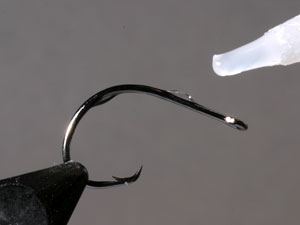
Step 1:
To avoid displacement of the lead body while you are tying in the other materials, itís a good idea to add a layer of super glue on the shank before you wind on the lead wire.
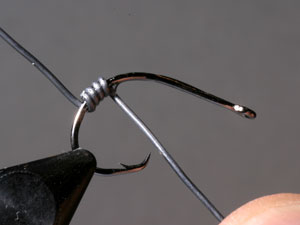
Step 2:
Place the lead wire a bit down in the hook bend across the hook and make sure that the end slants downward. Take hold of the end with your left hand and use your right hand to wind the lead wire forward, making sure the windings are tightly wound. Remove excess wire.
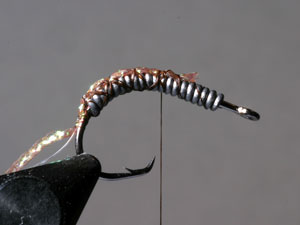
Step 3:
Attach the tying thread and tie in the Nymph Ribbing and 0.15 mm monofilament well into the hook bend.
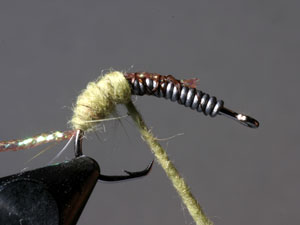
Step 4:
Dub some Light olive coloured muskrat dubbing onto the tying thread. Only use enough dubbing material to cover up the lead wire (this is why itís important that the windings are tight) so that light olive dubbing covers 2/3 of the body.
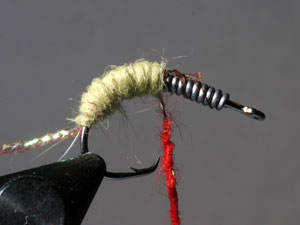
Step 5:
Dub a small red hot spot onto the thread and tie it in by two or three windings.
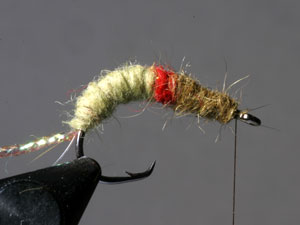
Step 6:
Dub dark olive muskrat onto to the tying thread and wind it tightly forward towards the eye of the hook.
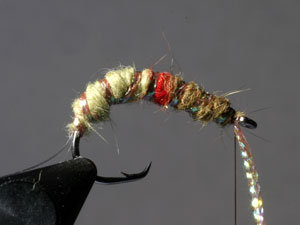
Step 7:
The next step is to create the ribs. This is done by making seven to eight windings of ribbing material.
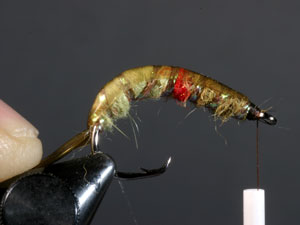
Step 8:
Use a pair of scissors on the back shield and make a tiny apex extending forward. Tie it in just behind the hook eye. This will allow you to make a good-looking head.
Pull the back shield over the body and tie it in by 7-8 windings of monofilament in such a manner as to get distinct body segments. Build a nice, conical head.
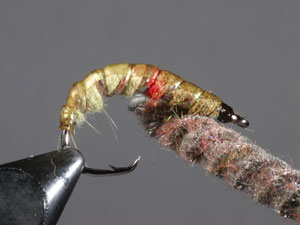
Step 9:
Use a dubbing brush or a dubbing needle to pull out fibres from the dubbing, particularly from the dark part of the thorax. Fibres extending on the side can be removed. This is important so that the fly wonít be slowed down when sinking towards the bottom.

Step 10:
A Czech Nymph is ready for a deep dive.
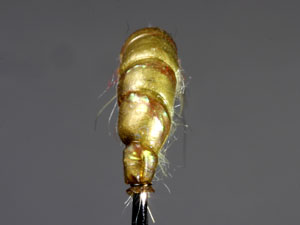
View from behind.
Some excellent Czech Nymph variants:
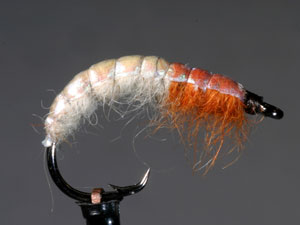
Circle Cream
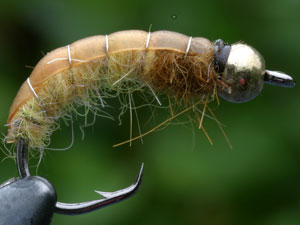
Circle Cream Tungsten
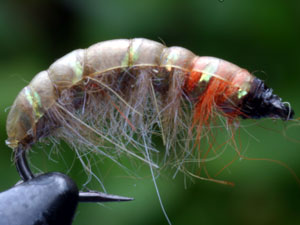
Long Point Grey&Orange
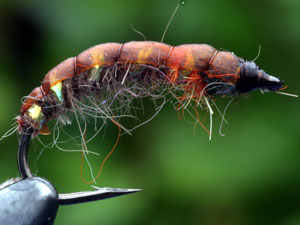
Long Point Hare
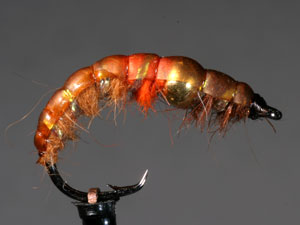
Circle Orange
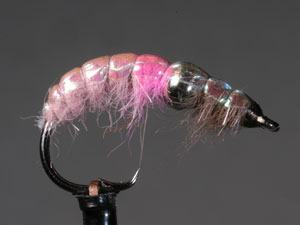
Circle Pink Tungsten
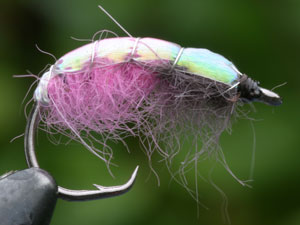
Circle Pink&Grey
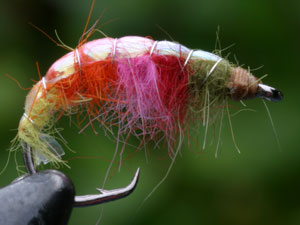
Circle Rainbow
Text and photos: Tom Skyrud, Norway. Translated by Jan Aspen Andersen from Norwegian Magazine "Alt om fiske".
Back